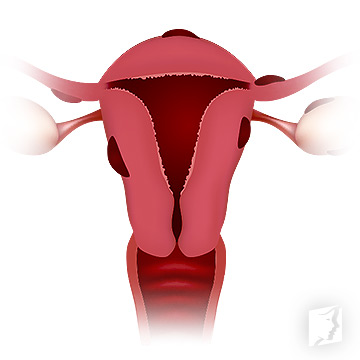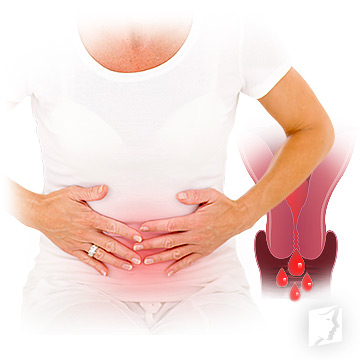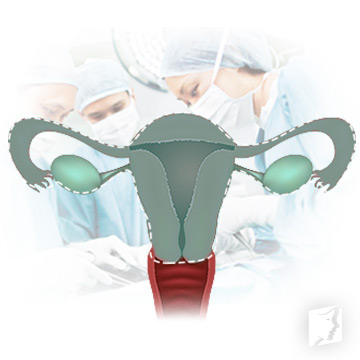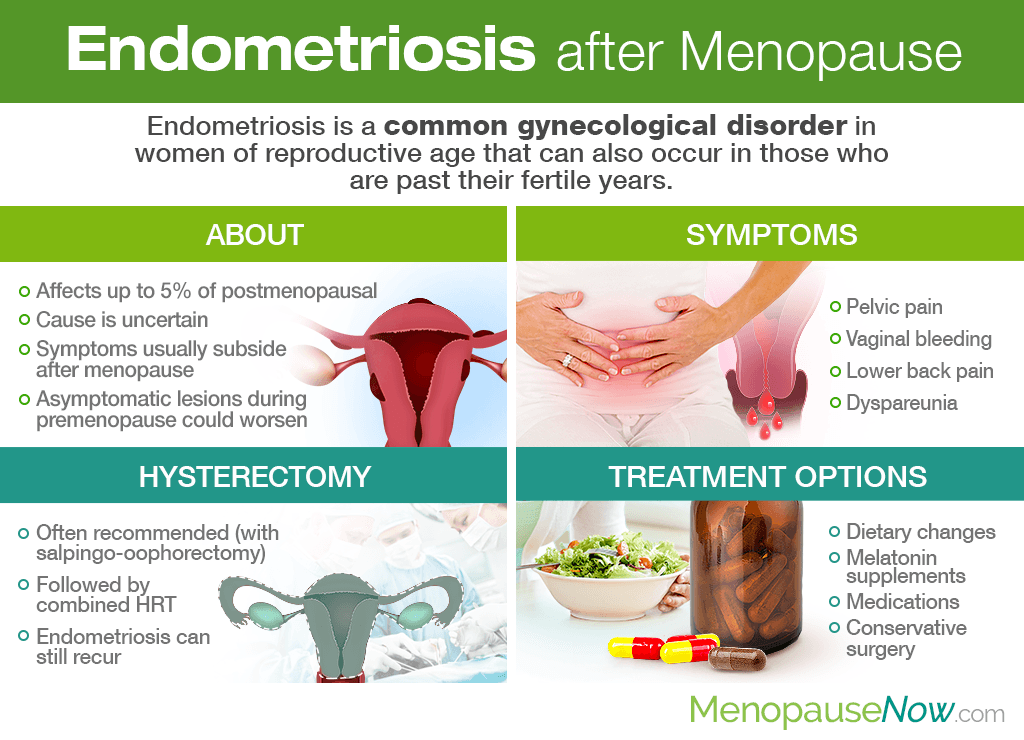While many believe that endometriosis - a gynecological disorder in which endometrial tissue is found outside the uterus - is solely a premenopausal ailment, endometriosis after menopause is not as uncommon as once thought.
Continue reading to learn all about endometriosis after menopause, including its possible causes, recurrence of endometriosis after menopause and hysterectomy, treatment options, and much more.
About Postmenopausal Endometriosis

Endometriosis affects up to 10 percent of women in their premenopause years. Its occurrence in those who are past fertile years continues being a perplexity, despite the fact that up to 5 percent of older women suffer from endometriosis pain after menopause.1,2
As such, it is important to clear up any reservations regarding the causes and occurrences of endometriosis after menopause before proceeding to viable treatment options.
Causes of Postmenopausal Endometriosis
Just as it is uncertain exactly what causes endometriosis in premenopause, the exact cause of postmenopausal endometriosis is also relatively ambiguous.
However, a major risk factor for endometriosis no matter one's age is having elevated levels of estrogen in the body or a greater lifetime exposure to the hormone.
As such, in regards to postmenopause, research suggests that the presence of greater circulating levels of estrogen from phytoestrogens, plant-based estrogens, and hormone replacement therapy (HRT) could contribute to the development or progression of the disease, especially when used for menopause symptom relief the years prior.3
Does Endometriosis Go Away After Menopause?
While it is true that premenopausal endometriosis symptoms usually subside once a woman enters postmenopause, this is not always the case.
In other words, you can have endometriosis after menopause even after the cessation of ovarian reproductive functions and the menstrual cycle.
Also, aging women should be aware that these symptoms can mirror those of other underlying health conditions common during postmenopause, such as ovarian cancer.
Can You Develop Endometriosis after Menopause?
Current research is not clear on if you can get endometriosis after menopause if you did not suffer from the condition during premenopause.
What research does claim is the possibility for premenopausal women to have asymptomatic endometriosis - meaning the disease did not exhibit symptoms - that is now progressing into their postmenopausal years.3
In short, postmenopausal endometriosis can arise in those with premenopausal history of the gynecological condition.
Symptoms of Endometriosis after Menopause

The list of endometriosis symptoms after menopause can include the following:
- Pelvic pain
- Vaginal bleeding
- Low back pain
- Painful defecation
- Constipation
- Bloating
- Abdominal cramps
- Gastrointestinal problems
- Pain during sexual intercourse (dyspareunia)
Postmenopausal women should keep in mind that they are also at higher risk of autoimmune disorders - like allergies, asthma, and fibromyalgia - as well as other health conditions, such as chronic fatigue syndrome and hypothyroidism, among others.
Endometriosis after Menopause and Hysterectomy

Hysterectomy with or without the removal of the ovaries and the fallopian tubes (salpingo-oophorectomy) is often recommended as the solution for postmenopausal endometriosis.
This is commonly followed by combined HRT of estrogen and progesterone at the lowest dose possible to decrease the risk of malignant transformation of the lesions.
However, endometriosis after hysterectomy can recur, especially if surgical removal of all endometriotic lesions is not thorough. Surprisingly, it has been found that those who keep their ovaries or start HRT after a removal of the ovaries are at a higher risk for relapse; the exact reasons why are unknown.4
Natural Treatment for Postmenopausal Endometriosis

Women looking to naturally treat their endometriosis after menopause should first turn to their nutrition.
Diet has proven to have a significant influence on the risk of pelvic endometriosis. Studies have shown that increased consumption of green vegetables and fresh fruits decreases the risk of endometriosis, while beef and other red meats increase the risk.5
Moreover, dietary fiber and whole grain intake promotes a healthy balance of gut bacteria, which is necessary to properly regulate circulating estrogens and reduce inflammation. Find them in raspberries, pears, green peas, broccoli, lentils, black beans, barley, quinoa, and more.
However, while natural treatments for postmenopausal endometriosis do include dietary changes as an instrumental step toward relief, other alternative options should not be forgotten, like melatonin supplements, which are scientifically proven to reduce endometriosis-related pelvic pain.6
Other Treatments for Postmenopausal Endometriosis
Other treatments for endometriosis after menopause will largely depend upon how severe signs and symptoms are.
Other than HRT or hysterectomy, whose proven risks were discussed earlier, postmenopausal women may be prescribed over-the-counter pain relievers for the discomfort or aromatase inhibitors to reduce the amount of estrogen in the body.
For those who wish to preserve their uterus and ovaries, conservative surgery may be undergone, during which a doctor may perform a laparoscopic or abdominal procedure to remove endometriosis lesions. Even so, endometrial pain after menopause post-op may return.
Nevertheless, always consult a doctor before starting any treatment regimen, natural or clinical, to ensure its safety.
Conclusions
Without a doubt, effectively treating postmenopausal endometriosis can be a challenging feat, yet long-lasting relief and a positive outlook is not impossible. It requires women to take a hands-on, multi-faceted approach of trial-and-error to find what works best for them not only for symptom alleviation, but ultimate hormonal balance far into their twilight years. To optimize efforts, check out other postmenopause treatments that could also be ensued in pursuit toward postmenopausal endometriosis relief.
Sources
- Baker, J.M. et al. (2017). Estrogen-gut microbiome axis: Physiological and clinical implications. Maturitas, 103, 45-53. doi: 10.1016/j.maturitas.2017.06.025
- Harvard Health Publishing. (2006). Endometriosis at midlife and beyond. Retrieved October 1, 2019, from https://www.health.harvard.edu/newsletter_article/Endometriosis_at_midlife_and_beyond
- Institute for Natural Medicine. (n.d.). How Do Naturopathic Doctors Treat Endometriosis? Retrieved October 1, 2019, from https://naturemed.org/faq/how-do-naturopathic-doctors-treat-endometriosis/
- Ladanyi, C. et al. (2019). Postmenopausal endometriosis, where are we now? Current Opinion in Obstetrics and Gynecology, 31(4), 267-278. doi: 10.1097/GCO.0000000000000548
- Mayo Clinic. (2019). Endometriosis: Symptoms & causes | Endometriosis: Diagnosis & treatment | Chart of high-fiber foods. Retrieved October 1, 2019, from https://www.mayoclinic.org/diseases-conditions/endometriosis/symptoms-causes/syc-20354656 | https://www.mayoclinic.org/diseases-conditions/endometriosis/diagnosis-treatment/drc-20354661 | https://www.mayoclinic.org/healthy-lifestyle/nutrition-and-healthy-eating/in-depth/high-fiber-foods/art-20050948
- Oxholm, D. et al. (2007). Postmenopausal endometriosis. Acta Obstetricia et Gynecologica, 86, 1158-1164. doi: 10.1080/00016340701619407
Footnotes:
- Snyder, B.M. et al. (2017). Postmenopausal Deep Infiltrating Endometriosis of the Colon: Rare Location and Novel Medical Therapy. Case Reports in Gastrointestinal Medicine, 2018. doi: 10.1155/2018/9587536
- Manero, M.G. et al. (2009). Endometriosis in a postmenopausal woman without previous hormonal therapy: a case report. Journal of Medical Case Reports, 3(135). doi: 10.1186/1752-1947-3-135
- Shah, D. (2014). Postmenopausal endometriosis: An enigma revisited. Journal of Mid-Life Health, 5(4), 163-164. doi: 10.4103/0976-7800.145189
- Rizk, B. et al. (2014). Recurrence of endometriosis after hysterectomy. Facts, Views & Vision in ObGyn, 6(4), 219-227. Retrieved October 1, 2019, from https://www.ncbi.nlm.nih.gov/pmc/articles/PMC4286861/
- Parazzini, F. et al. (2004). Selected food intake and risk of endometriosis. Human Reproduction, 19(8), 1755-1759. doi: 10.1093/humrep/deh395
- Schwertner, A. et al. (2013). Efficacy of melatonin in the treatment of endometriosis: a phase II, randomized, double-blind, placebo-controlled trial. Pain, 154(6), 874-81. doi: 10.1016/j.pain.2013.02.025

